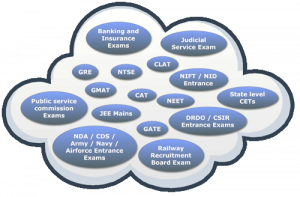Best Books to Read in 2023
Best Books to Read in 2023 Are you a bookworm or a bibliophile, if yes, then this is the ...
Case study analysis is useful for management students. It’s more than a course—it’s a preview of your future job problems. These real-life examples allow you to apply class ideas and acquire a business-ready problem-solving attitude.
It’s not easy to master case study solving. Strategic thinking, critical thinking, and innovation are needed. This book covers the finest case study solution tactics to help you succeed academically and become a good manager. Solving a management case study is a crucial skill for students pursuing degrees in fields such as MBA, HRM, Finance, and Marketing.
Also, read 10 Proven Memorize Techniques for Students- Friendly Tips

These case studies offer a practical application of management concepts, requiring students to analyze complex scenarios and devise solutions. In this comprehensive guide, we will outline a step-by-step approach to solving management case studies and provide a real-world example with a solution.
Step 1: Comprehensive Case Study Analysis
Comprehensive case study analysis is the cornerstone of effective problem-solving. It involves immersing yourself in the case study, not just skimming through it. Start by reading the case thoroughly, absorbing its context, characters, and central problem or objective. It’s crucial to understand the nuances of the situation presented, as even subtle details may significantly impact the solution.
During this phase, consider the following:
Step 2: Familiarize with the Industry and Company
Familiarizing yourself with the industry and the specific company involved in the case study is pivotal. This step provides essential context and aids in making informed decisions and recommendations. Here’s how to approach it:
Step 3: Define the Core Problem/Objective
In this step, your objective is to pinpoint the primary issue or objective that the case study revolves around. By clarifying the problem that needs resolution or the goal that must be achieved, you set the stage for your analysis and decision-making. Consider the following:
Step 4: Extract Relevant Information
A key aspect of case study analysis is extracting relevant facts and details from the case materials. This process involves revisiting the case study, both to reinforce your understanding and to gather pertinent information. Here’s how to approach it:
Step 5: Identify Key Statements

Within the case study, there are often statements or pieces of information that hold particular significance. These statements can serve as guideposts during your analysis, helping you define and address the problem more precisely. Consider:
Step 6: Assess the External Environment
To make informed recommendations, you must assess the external environment surrounding the case. This step involves considering various factors that can influence the solution, including:
Also, read Top 10 Hobbies That Boost Your IQ: A Guide for Students
Step 7: Address Real-Life Constraints
Recognize that real-life problem-solving often comes with limitations, including incomplete information and time constraints. You should be prepared to make decisions based on the available data and within reasonable time limits. Consider:
Step 8: Fill Information Gaps with Realistic Assumptions
Information gaps are common in real-world scenarios. To bridge these gaps, make realistic assumptions that align with the context of the case study. Use your judgment and critical thinking to supplement missing details while staying grounded in the case’s reality.
By following these steps diligently, you can approach management case studies methodically and develop well-structured, informed solutions that address the core problem or objective effectively
 Case Study: Enhancing Employee Performance at XYZ Corporation
Case Study: Enhancing Employee Performance at XYZ Corporation
Problem: XYZ Corporation, a well-established software development firm, is grappling with ongoing employee performance challenges. Several members of its software development team consistently fail to meet project deadlines and produce work below the company’s quality standards.
Problem Question 1: What is the core problem that XYZ Corporation is facing concerning employee performance?
The central issue that XYZ Corporation is confronting concerning employee performance is the persistent underperformance of several software developers within the organization. These individuals consistently fail to meet project deadlines and produce work that falls significantly below the company’s established quality standards. This recurring problem has become a significant impediment to the company’s software development projects.
Problem Question 2: How are the underperforming employees affecting the company’s software development projects and overall business operations?
The underperforming employees in XYZ Corporation are having a substantial negative impact on the company’s software development projects and overall business operations. Their consistent inability to meet project deadlines results in significant delays in project completion, disrupting project schedules and affecting the company’s ability to deliver products and services on time. Furthermore, the compromised quality of their work leads to subpar products, potentially resulting in client dissatisfaction and eroding the company’s reputation. These issues collectively undermine the company’s profitability as it grapples with missed opportunities and the costs associated with addressing substandard work. Addressing this challenge is imperative for XYZ Corporation to ensure its continued success and competitiveness in the software development industry.
.Student Approach to Solve:
By following these steps and considering the provided answers, students can approach and solve the case study effectively, offering valuable insights and recommendations to address XYZ Corporation’s employee performance challenges.
Finally, the case study solution connects management theory with practice. It helps students analyse difficult circumstances, make educated judgements, and find effective solutions, which employers in numerous sectors value.
The above guide’s techniques can help students succeed in management school and prepare them for job difficulties and possibilities. Accept case studies as learning opportunities, improve your problem-solving abilities, and become a skilled and resourceful manager. The greatest method to learn is through doing, and case study solution leads to real-world success.
Also, read 10 Best Economic Books for Commerce Students
Meet Tanu Bhatnagar, an educational expert with extensive experience in teaching, research and mentoring.With a decade in... (Full bio)

Best Books to Read in 2023 Are you a bookworm or a bibliophile, if yes, then this is the ...

In the exhilarating journey of 10 Proven Memorize Techniques for Students learning, memory is your trusty companion. Whether ...

Top 20 toughest exams in world is about exams in the world that required very hard work to ...

Top 20 toughest exams in India - Exams are the perhaps most toughest moments for any student. A ...

Top 20 Colleges of DU Getting admissions to the top 20 colleges of DU is a dream for every ...

Top 20 NITs of India - Amongst the 31 NITs in India, today, we are talking ...

Here are the Top 12 Artificial Intelligence in Mumbai. Artificial intelligence (AI) refers to the simulation of human ...

As you stand on the Best Science Courses after 12th academic journey, the realm of science beckons, offering ...
Millions of students have entrusted CollegeChalo to facilitate their seamless and smooth admission process to their dream colleges and universities. With CollegeChalo, you can gain a competitive edge by easily accessing exam and course details to stay ahead of the admission journey. What are you waiting for?
Search your dream college